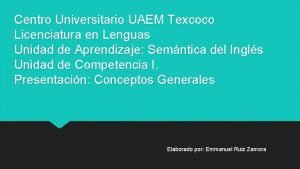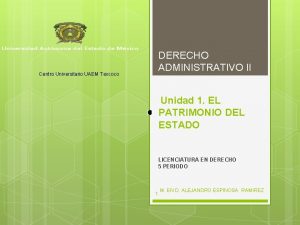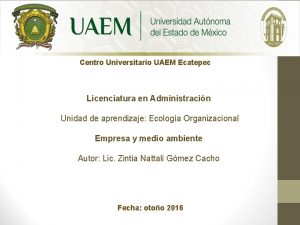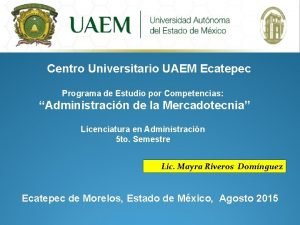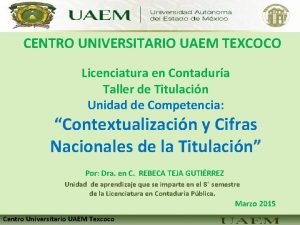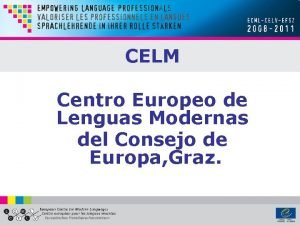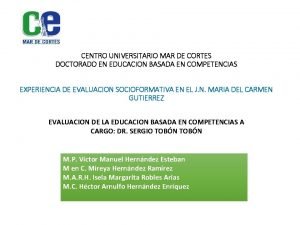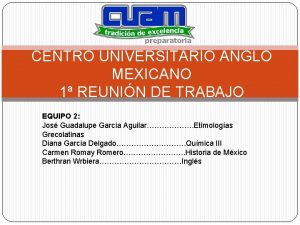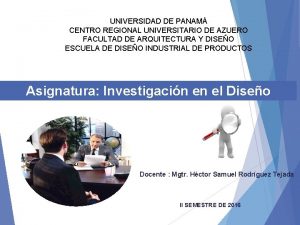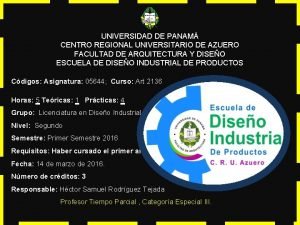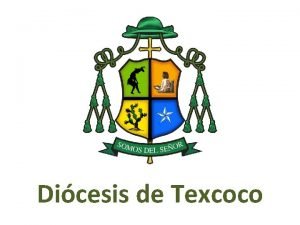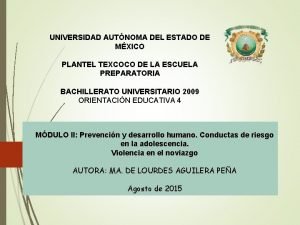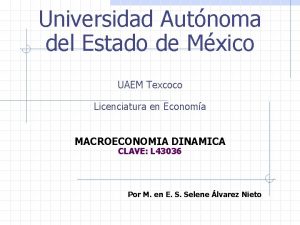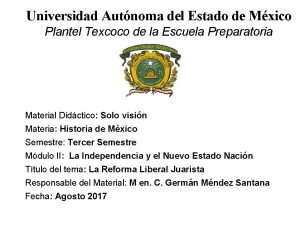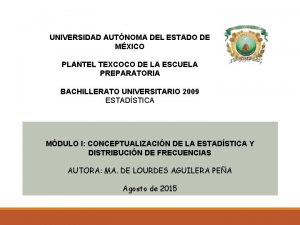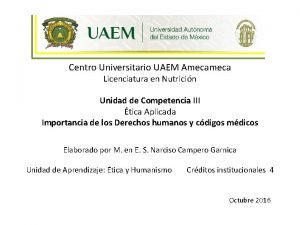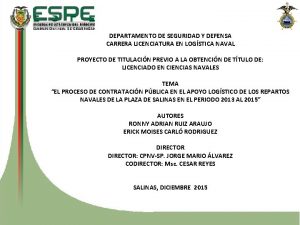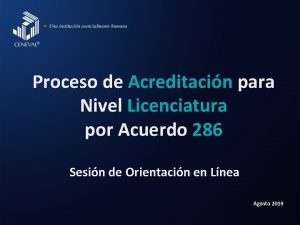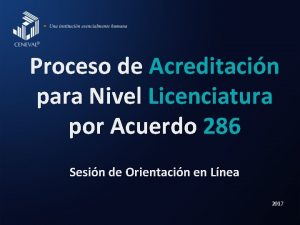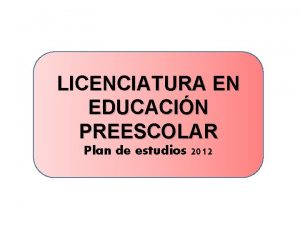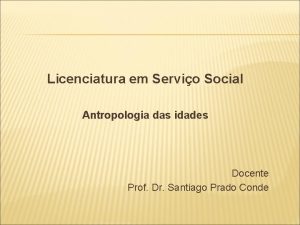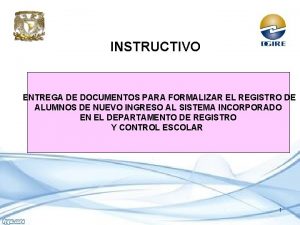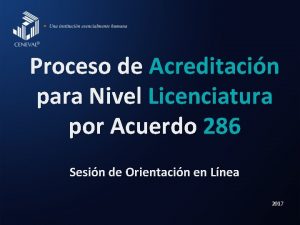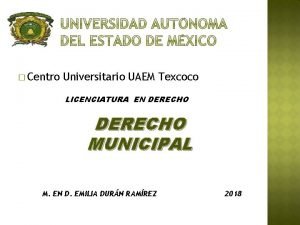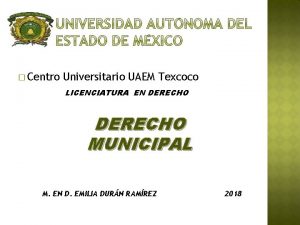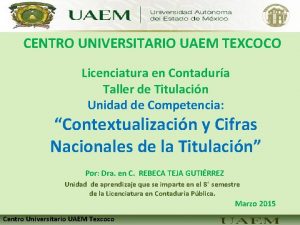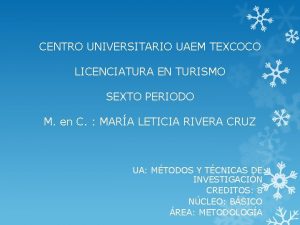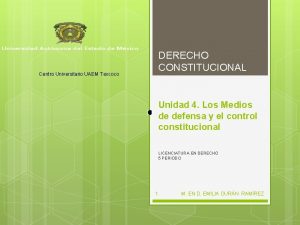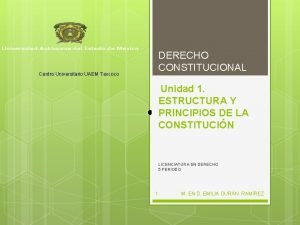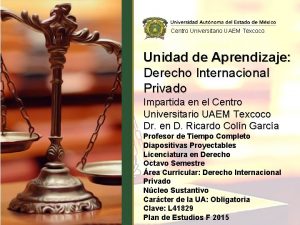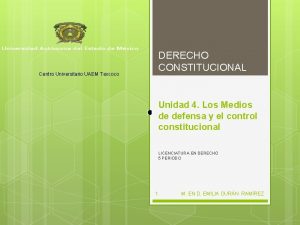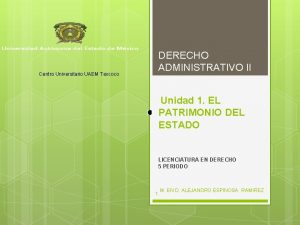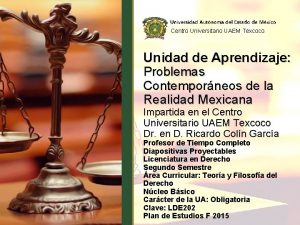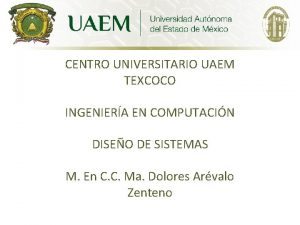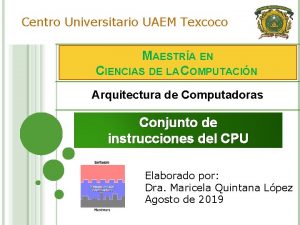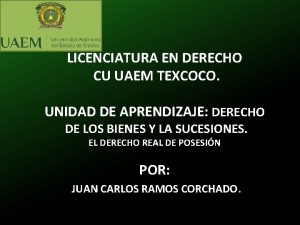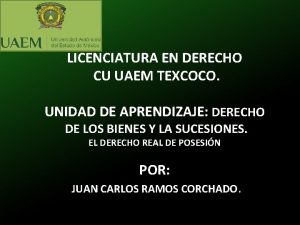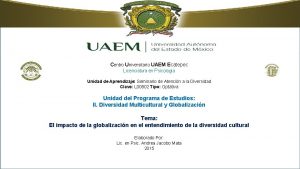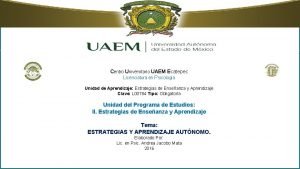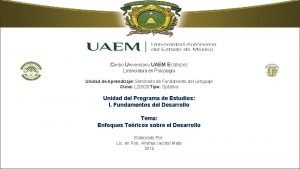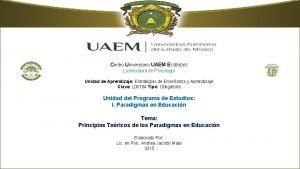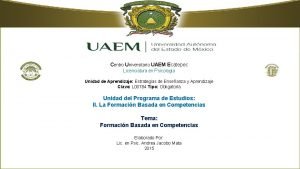Centro Universitario UAEM Texcoco Licenciatura en Lenguas Unidad






























- Slides: 30

Centro Universitario UAEM Texcoco Licenciatura en Lenguas Unidad de Aprendizaje: Semántica del Inglés Unidad de Competencia I. Presentación: Conceptos Generales Elaborado por: Emmanuel Ruiz Zamora



Introducción

Practice

i. The study of semantics Semantics: Study of meaning in language. Sentence meaning: What a sentence means, whats it counts as the equivalent of in the language concerned. Speaker meaning: What a speaker means when he uses a piece of language. Theory: A precisely, specified, coherent and economical frame-work of independent statements and definitions, constructed so that as large a number as possible of particular basics facts can either be seen to follow for it or be describable in teams of it.


Discussion

Practice

Discussion

II. Basic Concepts Utterance: Any stretch of talk, by one person, before and after which there is silence on the part of the person. Use by a particular speaker on a particular occasion, of a piece of language, such has a sequence of sentences, or a singular phrase, or even a single word. Proposition: Part of the meaning of the utterance of a declarative sentence which describes some state of a affairs. Sentence: Physical event nor a physical object. It is, conceived abstractly, a string of words put together by the grammatical rules of a language. A sentence can be thought of as the ideal string of words behind various realizations in utterances and inscriptions. Grammatically complete string of words expressing a complete thought.

Practice

II. Basic Concepts Sense: Is its place in a system of semantics relationships with other expressions in the language. The first of this semantics relationships that we will mention is sameness of meaning, and intuitive concepts which we will illustrate by example. We will deal first with the senses of words in context. Means of reference: A speaker indicates which things in the word (including persons) are being talked about.

II. Basic Concepts Referring expression: Any expression used in a utterance to refer to something or someone ( or a clearly delimited collection of things or people), used with a particular reference in mind. Opaque context: Part of a sentence which could be made into a complete sentence by the addition of a referring expression, but where the addition o diffent referring expressions, even though refer to the same thing or person, in a given situation, will yield sentences with different meanings when uttered in a given situation. Equative sentence: Used to assert the identity of the referents of two referring expressions, to assert that two referring expressions have the same referent.

Discussion

Discussion 2

Practice

II. Basic Concepts Predicator: Declarative sentence in the word (sometimes a group of words) which does not belong to any of the referring expressions and which, of the remainder, makes the most specific contribution to the meaning of the sentences. Describes the state or process in which the referring expressions are involved. Degree: Number indicating the number of arguments it is normally understood to have in simple sentences. Predicate: Any word (or sequence of words) witch (in a given single sense) can function as the predicator of a sentence.

Practice

II. Basic Concepts Universe of discourse: For any utterance as the particular word, real or imaginary ( or part real, part imaginary), that the speaker assumes he is talking about at the time. Generic sentence: In which some statement is made about a whole unrestricted class of individuals as opposed to any particular individual.

Practice

II. Basic Concepts Deictic: Word is one which takes some element of its meaning from the context or situation ( the speaker, the addressee, the time and the place) of the utterance in which it is used. Context: Utterance is a small subpart of the universe of discourse shared by speaker and hearer and includes facts about the topic of the conversation in which the utterance occurs, and also facts about the situation in which the conversation itself takes place. Definiteness: Feature of a noun phrase select by a speaker to convey his assumption that the header will be able to identify the referent of the noun phrase, usually because it is the only thing of its kind in the context of the utterance, or because it is unique in the universe of discourse.

Practice

II. Basic Concepts Extension: Predicate in the set of all individuals to which that predicate can truthfully be applied. It is the set of things which can potentially be referred by using and expression whose main element is that predicate. Prototype: Predicate is an object which is held to ve very typical of a king of the object which can be referred to by an expression containing the predicate. Can be thought of as the most typical member of the extension of a predicate. REFERRING EXPRESSIONS Referent: Thing picked out by the use of that expression on a particular occasion of utterance. Extension: The complete set of all things which could potentially (in any possible utterance) be the referent of a referring expression whose head constituent is that predicate. Prototype: Typical member of its extension.

Practice

Practice

Referencias Hurtford, J. R. B. Healy (1995). Semantics, a Coursebook. Cambridge University Press.


Extra exercises http: //www. cs. bham. ac. uk/~pxc/nlp/Interactive. NLP/NLP_mean 1. html http: //www. ello. uos. de/field. php/Semanticsidentifysenserelations

End of Main concepts.
 Licenciatura en lenguas uaem texcoco
Licenciatura en lenguas uaem texcoco Derecho administrativo ii uaemex
Derecho administrativo ii uaemex Centro universitario uaem ecatepec
Centro universitario uaem ecatepec Uaem ecatepec costos
Uaem ecatepec costos Uaem texcoco licenciaturas
Uaem texcoco licenciaturas Centro europeo de lenguas modernas
Centro europeo de lenguas modernas Uni ibmr
Uni ibmr Centro universitario mar de cortés doctorado
Centro universitario mar de cortés doctorado Centro universitario anglo mexicano
Centro universitario anglo mexicano Universidad nacional de azuero
Universidad nacional de azuero Universidad nacional de azuero
Universidad nacional de azuero Diócesis de texcoco
Diócesis de texcoco Plantel texcoco de la escuela preparatoria
Plantel texcoco de la escuela preparatoria Texcoco
Texcoco Texcoco
Texcoco Que es circulograma
Que es circulograma Uaem ameca
Uaem ameca Unidad decena centena unidad de mil para niños
Unidad decena centena unidad de mil para niños Centro zonal soledad atlantico
Centro zonal soledad atlantico Licenciatura en seguridad y defensa
Licenciatura en seguridad y defensa Licenciatura acuerdo 286
Licenciatura acuerdo 286 Acuerdo 286 licenciatura
Acuerdo 286 licenciatura Plan de estudios lmad
Plan de estudios lmad Residencia licenciatura en obstetricia
Residencia licenciatura en obstetricia Malla curricular preescolar 2012
Malla curricular preescolar 2012 Plan de estudios 1999 licenciatura en educación preescolar
Plan de estudios 1999 licenciatura en educación preescolar Acuerdo 286 licenciatura
Acuerdo 286 licenciatura Licenciatura antropologia
Licenciatura antropologia Certificado de licenciatura
Certificado de licenciatura Solicitud acuerdo 286
Solicitud acuerdo 286 Lenguas ánglicas
Lenguas ánglicas
